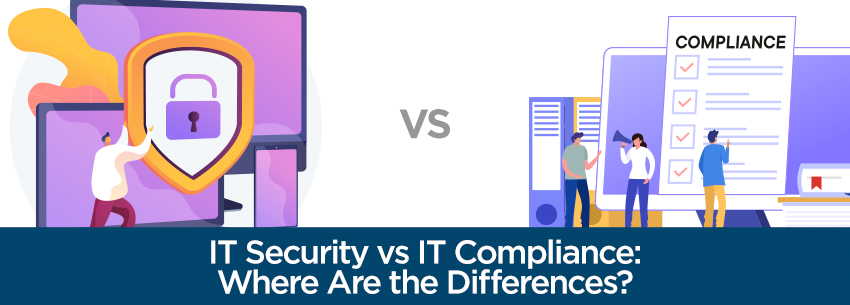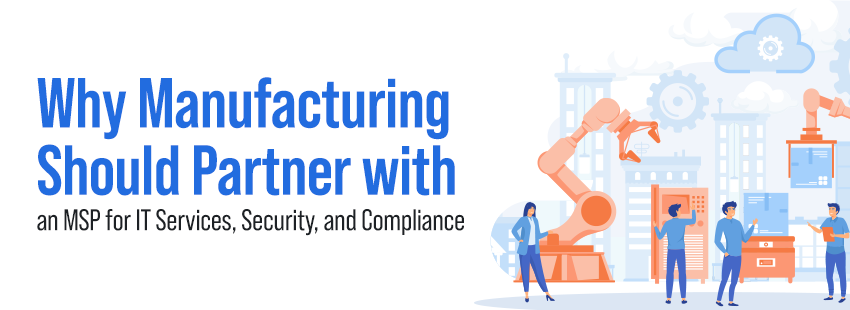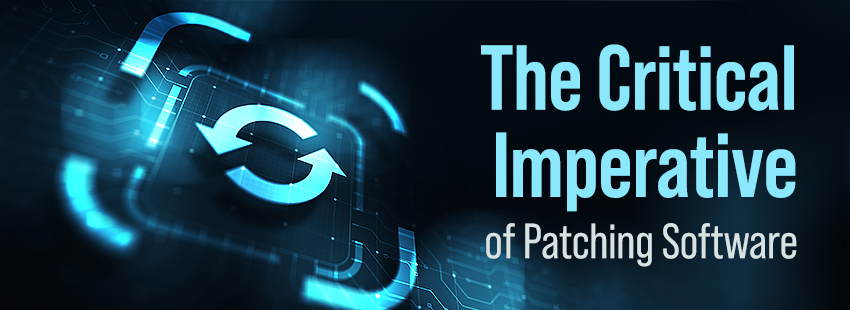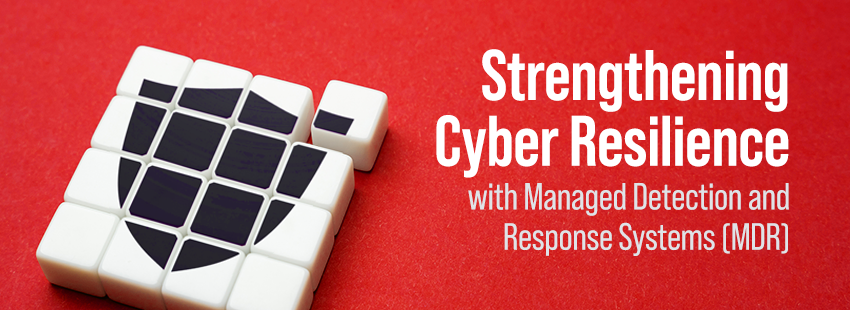When it comes to limiting risk for your business, many SMBs turn to compliance as the gold standard to build their cyber strategies (and conveniently also help avoid pesky fines). However, it’s important to note that implementing a good IT security strategy is different from meeting compliance needs.
There are certainly a lot of similarities and overlaps between IT security and IT compliance. Both aim, for instance, to prevent attackers from harming a company’s network or stealing company data. Under that falls integrity, accessibility, and confidentiality of data.
However, there are also many places where the two disciplines differ. The most fundamental is where the requirements originate. IT security is typically specific requirements mandated by the company to achieve its goals around protecting threats to their corporate or customer assets. In contrast, IT compliance is mandated from a third party, such as a government or industry organization (ex. HIPAA, PCI, GDPR, etc.).
Another significant difference is that IT security is a constantly evolving practice, just like the threats targeting organizations today. With that in mind, it’s never truly finished and needs to be constantly improved upon and reiterated. Compliance, meanwhile, typically involves a checklist of items that a company must meet, therefore giving the process a natural conclusion when all standards have been met.
The slight differences between IT security and IT compliance mean that there can exist a gap where meeting IT compliance goals doesn’t necessarily achieve actual cybersecurity protections for the organization. One point of view is that this causes companies — from SMB to enterprise — only to do the bare minimum requirements for security. On the flip side, compliance provides a framework for organizations to know where to start when reducing cyber risk — a task that can seem overwhelming to some otherwise.
Ultimately, both philosophies are necessary by any SMB looking to limit their cyber risk comprehensively. Organizations need to ensure they’re both meeting their regulatory compliance demands (both for their security and to avoid any potential fines or other implications), as well as taking proactive steps beyond those measures to get ahead of today and tomorrow’s threats. In this regard, IT security and IT compliance can be a perfect alliance.
For SMBs looking for guidance on implementing IT security or compliance, engaging with a managed services provider (MSP) can help. An MSP can work hand in hand with an SMB to define their IT security and compliance strategy and help them implement it and update it on an ongoing basis to stay at pace with the latest threats.
Whether an SMB leads with IT compliance or IT security (or both), ultimately, what matters is that they’re taking the necessary steps to mitigate risk to their organization. Cyberattacks are increasing every day, and there is no time to waste for SMBs if they want to ensure their organization and their customers are fully protected.





